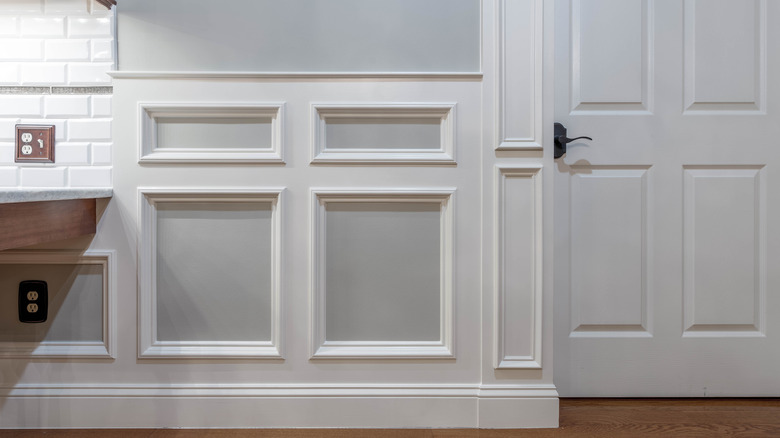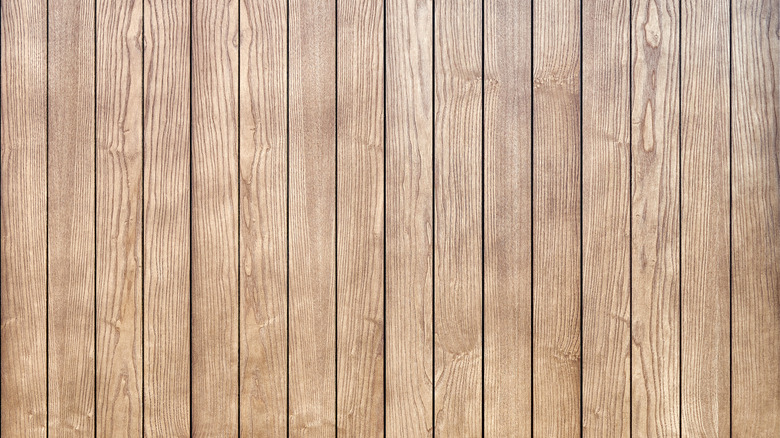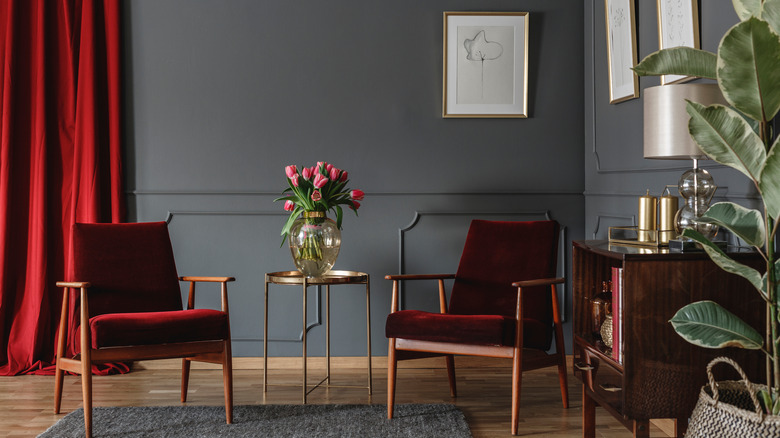What Materials Can You Get Wainscoting In?
If you've ever set foot inside a centuries-old Victorian-style home, you're probably at least vaguely familiar with wainscoting. According to Realtor, wainscoting first served as a practical alternative to exposed sheetrock walls. However, it has since morphed into a decorative tool widely used by designers and contractors alike to spruce up homes' interiors. Wainscoting is often dismissed as old-fashioned compared to recent contemporary interior design trends. Still, the feature offers timeless versatility, as homeowners now have many styles available on the market.
Canadian Woodworking & Home Improvement Magazine states that wainscoting can be pretty easy to install, especially in modern styles focusing more on clean lines than intricate, handcrafted designs. Installation tutorials can be found online for DIY fanatics, but there's no shame in consulting a professional for quotes or expertise. If you're considering adding wainscoting to the inside of your home, you should first become familiar with the various materials contractors use to create the product, as they each differ in price, durability, and feel.
The history of wainscoting
Artichoke Kitchens & Interiors claims the earliest adaptation of wainscoting traces back to the 13th century when King Henry III of England first attached wood panels along the walls of his Windsor Castle home. But wainscoting, as we know it today, originated in the 18th century, as Europeans used the product to cover the bottom half of interior walls, per The Moulding Company. They state that the name "wainscoting" is Germanic, translating to a word that means "wall-board" in English.
According to Realtor, the initial purpose of wainscoting was to help insulate naturally cold and drafty rooms by adding a layer of hardwood paneling on top of the wall. Hardwood also proved to be a sturdier and more durable surface than traditional sheetrock and plaster, offering interior walls better protection against bumps, nicks, and dents. As wainscoting became increasingly popular in homes, homeowners of the era used wooden paneling to flaunt their wealth. Wainscoting became a symbol of wealth in those earlier centuries, per Sunshine Alliance Cabinets & Millwork, as those with more money could afford higher-quality materials and more intricate, elaborate designs that adorned their walls' moldings.
The different materials used in wainscoting
Wainscoting now comes in various styles and materials to fit the aesthetic vision and budget of the homeowner. The most common materials used in wainscoting today remain hardwood and wood substitutes. Traditional wooden options usually come at a much higher price when compared to their thinner, less durable counterparts. The raw material costs more per square foot, and contractors may charge a higher service fee to install it. Beadboard, a popular wainscoting style, often uses thickly cut wood panels to create its iconic appearance. Wainscoting designs consisting of paneling typically cost less than solid wood styles, per Canadian Woodworking & Home Improvement Magazine. Yet, the quality and density of the wood used during installation can drastically affect the project's price tag.
Medium-density fiberboard is a cheaper alternative to hardwood that also comes in water-resistant varieties, which can prove beneficial for homeowners wishing to install wainscoting inside a room that encounters water frequently, like a bathroom or kitchen. Traditional hardwood succumbs to water damage easily and quickly, while water-resistant MDF, and its plastic alternative, PVC, can protect the underlying wall more effectively. Homeowners can apply paint, stains, or glossy finishes on top of wainscoting once installed, but some materials cooperate with top coats more efficiently than others. Benjamin Moore recommends adding a layer of primer to wainscoting before painting to make the paint last longer. Consult a professional before painting or staining your wainscoting.


